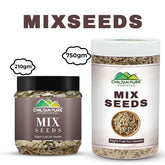Marigold Tea – Enjoy Every Sip of Relaxation
What Is Marigold Tea Good for?
Marigold tea is an herbal tea without caffeine but has many beneficial ingredients, such as the antioxidant flavonoid. In the past, even though people did not know the chemical principle, they still could feel the benefits that marigold brings from daily life. Therefore, there are many uses of marigold in folk remedies.Antioxidant
Excessive amounts of radicals in the body can lead to oxidative stress, responsible for most diseases. A marigold is rich in carotenoid, laricitrin (a flavonoid), and glycoside. All of these ingredients can help remove the radicals and brings the following benefits:- Treating inflammation in the body.
- Delay the vascular aging.
- Potential cancer-preventing effect.
Antibiosis
Marigold found antibiosis ingredients in extract, which helps kill bacteria and fungus. Folks consume marigold tea to cure colds, fever, respiratory tract infection, and gastrointestinal discomfort; most of them are caused by Escherichia coli, Salmonella typhi, or Staphylococcus aureus. Besides, in some South American countries, people use the marigold infusion to wash genitals and cure the disease caused by Candida Albicans. Having marigold tea or rinsing the mouth can improve oral health and solve the ozostomia problem with the antioxidant property.Eye Health
 To keep the eyes healthy is the most common use of marigold. A carotenoid called lutein in marigold is a powerful antioxidant, The human body cannot synthesize it. When you lack the lutein, it may lead to macular degeneration blurred vision; in severe cases, your eye may deteriorate and get short-sightedness.
Even though lutein is not regarded as necessary nutrition of the body, it plays a great help in keeping heath vision and prevention of eye diseases, such as age-related macular degeneration (ARMD) and cataracts. Adequate intake of carotenoids also helps reduce the risk of bowel cancer and heart disease.
To keep the eyes healthy is the most common use of marigold. A carotenoid called lutein in marigold is a powerful antioxidant, The human body cannot synthesize it. When you lack the lutein, it may lead to macular degeneration blurred vision; in severe cases, your eye may deteriorate and get short-sightedness.
Even though lutein is not regarded as necessary nutrition of the body, it plays a great help in keeping heath vision and prevention of eye diseases, such as age-related macular degeneration (ARMD) and cataracts. Adequate intake of carotenoids also helps reduce the risk of bowel cancer and heart disease.
Skin Health
 Marigold extract is the main component of many essential oil and skincare products. In the folk, people smear the marigold infusion on the skin to cure trauma such as wound and burn, or the skin disease such as ulceration, eczema, and acne. The benefits may come from its anti-inflammation and antibiosis properties. But it seems not to take a good effect by consuming marigold tea.
Marigold extract is the main component of many essential oil and skincare products. In the folk, people smear the marigold infusion on the skin to cure trauma such as wound and burn, or the skin disease such as ulceration, eczema, and acne. The benefits may come from its anti-inflammation and antibiosis properties. But it seems not to take a good effect by consuming marigold tea.
How to Make Marigold Tea?
If there are marigolds in your garden, that will be simple to DIY marigold tea. Of course, you can buy them from the florist, but be sure they have not been contaminated with pesticides.- First, pick the fresh marigold flower and clean them up. Do as gentle as you can and don't let the petals break.
- Spread and place the flower after cleaning in a cool and ventilated for drying. Avoid direct sunlight, making the marigold lose its flavour and nutrition. Usually, it will cost more than three days for drying.
- The flowers, after drying, are ready for making marigold tea, but first, you should store them well.
- Take 1-2 dried marigold flowers, put them into the cup, add 50℃ warm water, steep for 10s, then pour the infusion out. This is for washing the dust off they got during drying.
- Add 85℃ hot water in again, steep for 3-5 mins, then serving.
Marigold Tea Precaution
Marigold tea is considered safe by the FDA. Still, people who are allergic to the Compositae family should pay attention to it. It's best to smear a little on your hand or ask your doctor before having marigold tea.FAQS
Is marigold safe in tea?
You can prepare tea with dried marigold flowers. After drying the flower petals at a low temperature, boil water and add a tablespoon of dried flowers to the tea kettle before steeping. Depending on your condition, drink several cups per day.How do you harvest marigolds for tea?
Cut selectively into the marigold clumps. If you don't remove too many stems at a time, you'll be able to harvest and continue growing throughout the season. Individual items must be plucked just above the plant's base for ease of drying and to maintain the environment clean.How do you preserve marigold flowers for tea?
Tie a 10-inch length of twine around the rubber band and use the yarn to hang the bunch of marigolds upside down from the hook. Refrain from disturbing or touching the marigolds while they hang to dry. Wait for two to four weeks for the marigolds to dry completely.What does marigold tea taste like?
It's sweet and much stronger now and edging on the verge of tasting like green tea. It tastes very much like what you would expect a flower to taste like. It's a pleasant experience to watch something being created from what looks like nothing.
Tags:




![Red Onion Oil 🧅 Reduces Hair Fall & Accelerates Hair Regrowth [پیاز کا تیل].. Trending.... 🔥 - ChiltanPure](http://chiltanpure.com/cdn/shop/products/red-onion-oil-reduces-hair-fall-amp-accelerates-hair-regrowth-piaz-ka-til-trending-394813_165x.jpg?v=1707464619)
![Red Onion Oil 🧅 Reduces Hair Fall & Accelerates Hair Regrowth [پیاز کا تیل].. Trending.... 🔥 - ChiltanPure](http://chiltanpure.com/cdn/shop/products/red-onion-oil-reduces-hair-fall-amp-accelerates-hair-regrowth-piaz-ka-til-trending-329640_165x.jpg?v=1708127491)















Leave a comment
Please note, comments need to be approved before they are published.